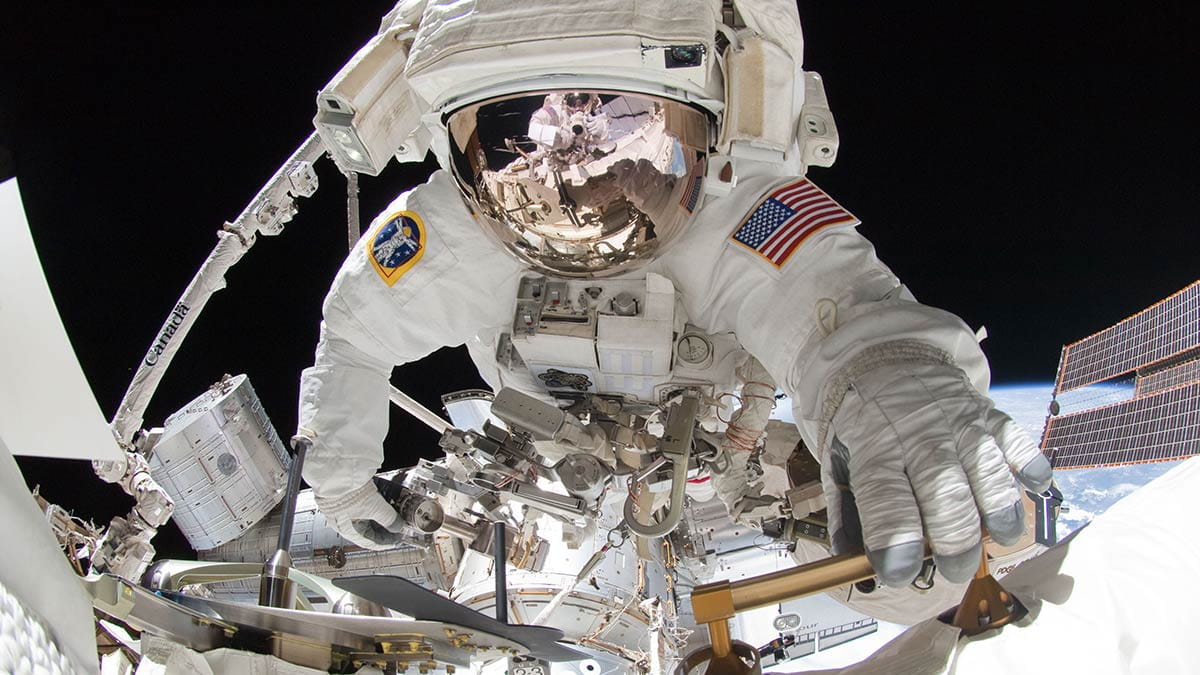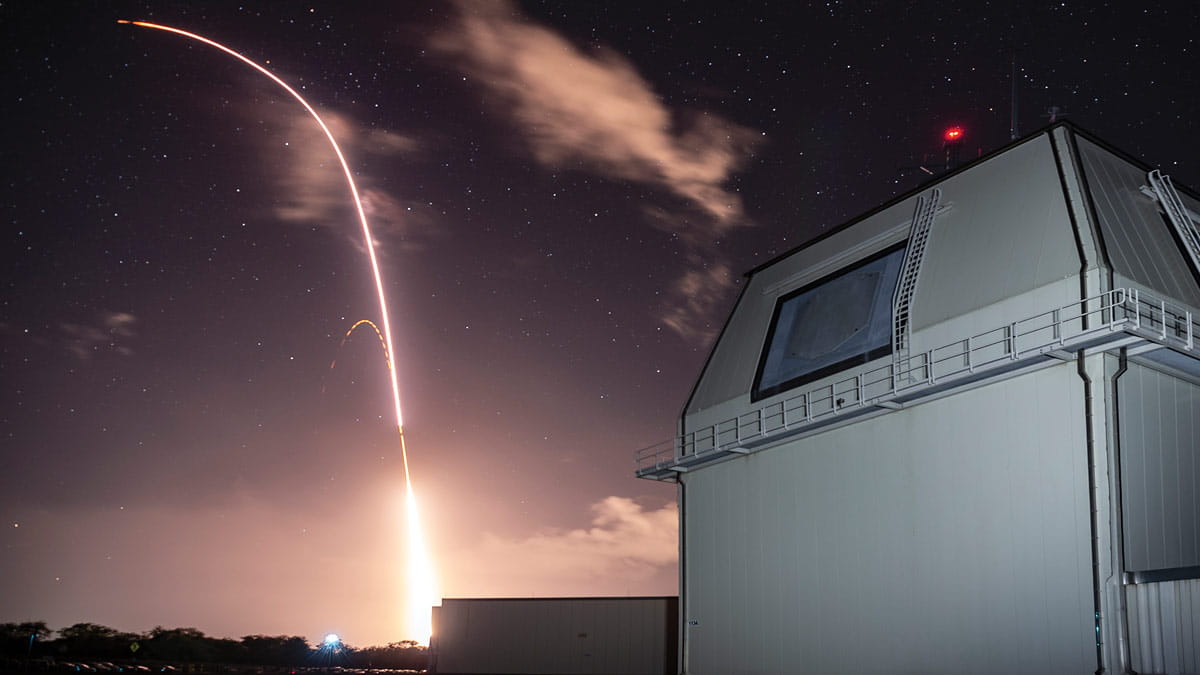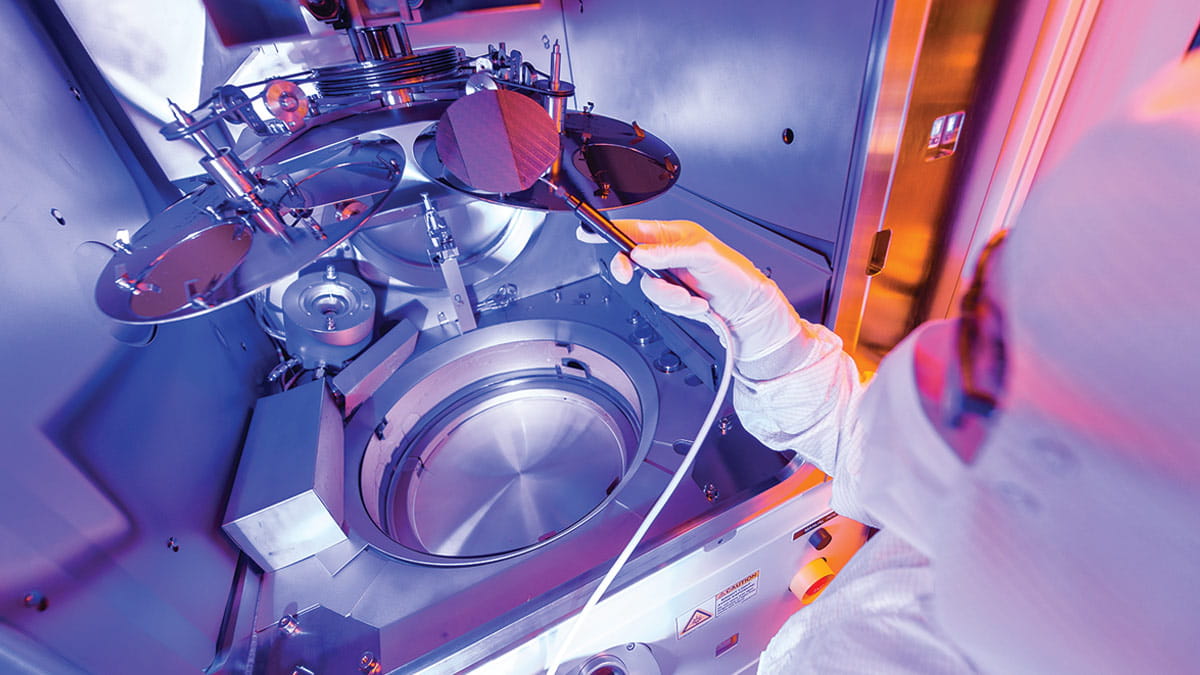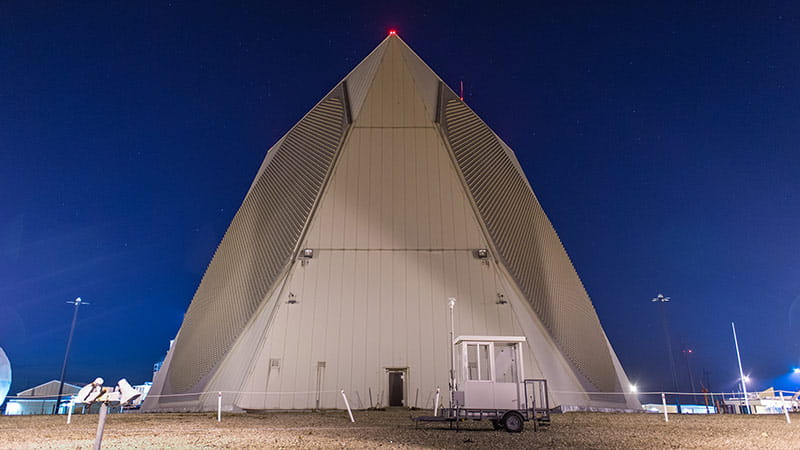30
named storms in the 2020 Atlantic hurricane season
Take a look around. There’s a lot going on.
There’s a new rover on Mars and a long-term plan to send people there. The need for climate science – analysis of phenomena on Earth, better prediction of severe weather – has never been greater. Commercial air travel is on its way back – and it’s probably going to look and feel different from how you remember it. And keeping the U.S. and allies ahead of adversary nations and their military capabilities remains important as ever.
These are among the moments that are shaping the future of the world. And Raytheon Technologies and its businesses are working on all of them.
In each section below, see how our experts are working across the company to define a new era in aerospace and defense.

Collins Aerospace makes NASA's current spacesuit, officially known as the Extravehicular Mobility Unit.
When word came down that the United States was planning to send people back to the moon, Shawn R. Macleod and his colleagues at Collins Aerospace, a Raytheon Technologies business, got right to work.
A brain trust of engineers, business strategists, former astronauts and other creative thinkers started sketching out what the new spacesuit would need to do, how it would work – and how to build it in time for the new lunar mission in 2024.
"We locked a bunch of us in a room for several days and we walked through, 'what is the life of an astronaut for this mission?'" said Macleod, Collins' director of business development for civil space and sea systems.
They were working from a strong foundation; Collins makes NASA's current spacesuit, officially known as the Extravehicular Mobility Unit and colloquially called 'the world's smallest spacecraft.'
But a new moon mission – especially one that will serve as a proving ground for technologies to enable even deeper space travel – calls for a new spacesuit altogether. After a few days of brainstorming, the team's to-do list became clear: more mobility so astronauts could bend and take geological samples. A design that worked for astronauts of all sizes – not just those of a certain frame. Advanced CO2 removal. A modern human-machine interface.
They had a prototype ready for the 50th anniversary of the Apollo 11 landing – and the work continues today, always with an eye on how it can help astronauts do their jobs in the decades to come. In addition to the spacesuit, Collins produces a number of systems for both crewed and uncrewed missions. They have included the lens assemblies for the Perseverance Mars rover and optics for the Mars Reconnaissance Orbiter, along with numerous life-support systems and even a trash compactor that could end up solving some of the stickiest problems in deep space travel.
"We're always trying to find ways to allow humans to work and live in space and do it for longer durations," Macleod said. "And so, when you look at spacesuits, spacesuits provide you an opportunity to work and live in space in different ways."

From 500 miles up in space, the Visible Infrared Imaging Radiometer Suite is changing the way we see Earth, and its value goes well beyond weather prediction. Its data is critical to industries as diverse as agriculture, finance, transportation, insurance and energy.
The 2020 Atlantic hurricane season was the most active on record. There were 30 named storms. Twelve made landfall. It was the fifth above-normal season in a row, according to the National Oceanic and Atmospheric Administration, and the eighteenth in 26 years.
"We're seeing stronger events, we're seeing wetter events, and that's because there's more energy available to hurricanes to be able to intensify and become the monsters that they become," said Shawn Cochran, a scientist and senior business development manager at Raytheon Intelligence & Space, a Raytheon Technologies business.
For Cochran and his colleagues, the challenge is clear.
"We need to improve our ability to understand the atmosphere and the state of the atmosphere," he said. "And we need to reduce the timescale."
The key, he believes, is in the frequency of soundings – vertical measurements of temperature and humidity from Earth's surface to the top of the troposphere. Right now, those happen about once every six hours. The trouble, Cochran says, is that severe weather makes big changes much faster.
named storms in the 2020 Atlantic hurricane season
above-normal Atlantic hurricane seasons in a row
His goal: soundings every 15 minutes, resulting in high-fidelity forecasts and, in turn, a much better chance to mitigate loss of life and damage to property.
Raytheon Intelligence & Space, whose weather-observing systems include the Visible Infrared Imaging Radiometer Suite, is developing design options for NOAA’s High Resolution Infrared Sounder, which would provide a far clearer picture than current microwave and infrared sounders. That includes pinpointing places where severe weather is likely to develop – namely the “dry line” between humid Gulf of Mexico air and dry air from the Great Plains.
The benefits of better weather prediction extend beyond daily civilian life. They’re also critical to military planning, including optimizing routes for fighter jets and deploying on humanitarian missions, like when aircraft carriers provide aid to hard-hit coastal areas.
“When you invest in technology like sounders or visual capabilities from Earth observations,” Cochran said, “you don’t just position the military or the government, you position society to be able to better respond to extreme weather.”


A Standard Missile-3 Block IIA missile launches from the Aegis Ashore Missile Defense Test Complex at Pacific Missile Range Facility in Kauai, Hawaii. (Department of Defense photo)
Missile defense is all about buying time. The sooner you detect an attack – or precursors to an attack – the more options you have to intervene.
And the best place to buy that kind of time is in space.
"You want to know in advance if people are gearing up to do some kind of test launch or, God forbid, a real launch," said Bryan Rosselli, vice president of Strategic Missile Defense at Raytheon Missiles & Defense, a Raytheon Technologies business. "When that happens, you want to know early – as early as you can – that something is happening so that you have time to respond to it. Space plays a huge role in doing that."
Even the best sensors on Earth have a blind spot: the horizon. And waiting until an attack from afar comes within their field of view isn't always optimal.
"Space provides an unencumbered view for early missile warning and tracking," said Paul Meyer, vice president of Space & C2 Systems at Raytheon Intelligence & Space. "And the best approach is a resilient approach across orbits, everything from low Earth orbit to geosynchronous orbit and beyond."

Raytheon Technologies makes its own gallium nitride, a powerful semiconductor that extends the range of its radars and improves their ability to detect and discriminate.
The U.S. and its allies already use systems of satellites to watch over Earth, and they're developing even more. DARPA's Blackjack constellation, for example, would speed up the missile defense response by networking multiple satellite sensors together and sending data straight to military operators, rather than to a ground station. The business is also designing the payloads for a system of resilient U.S. Air Force missile-warning satellites known as Next Gen OPIR Block 0. And on land, a Raytheon Missiles & Defense-built system known as the Early Warning Radar keeps watch above Earth's atmosphere, with a detection range greater than 5,000 km, or more than 3,100 miles.
Detecting a launch is only the first step. A successful intercept in space also requires cueing the right radars, tracking the target, distinguishing it from debris and anything else in the area, and guiding the interceptor until the moment of impact.
"Not only do you have to hit the right object in space, but you have to hit it with pinpoint accuracy," Rosselli said. "A glancing blow doesn't cut it when you're talking about a nuclear-tipped warhead."
Decades of work in missile defense have prepared the company well; now, when engineers set out to improve a system or design a new one, they have about 40 years of flight test data to work from. Raytheon Technologies' use of validated modeling and simulation – essentially, using computers to predict an interceptor's performance – has set the company apart.
Intercepting a missile is hard in any environment but even harder in space. It's harsh. It's a vacuum. There's no gravity, meaning even a minor contamination can severely compromise function; a floating speck of dust, for example, can interfere with the optics or short out a circuit. Then, of course, there's the question of getting the interceptor into space in the first place. It has to fly very high, very fast an on course, fighting gravity until there is none, then staying on the path to the target.
"That's what's so cool about what we do," Rosselli said. "That's what makes the engineering challenges and the marvels that we create so great."
